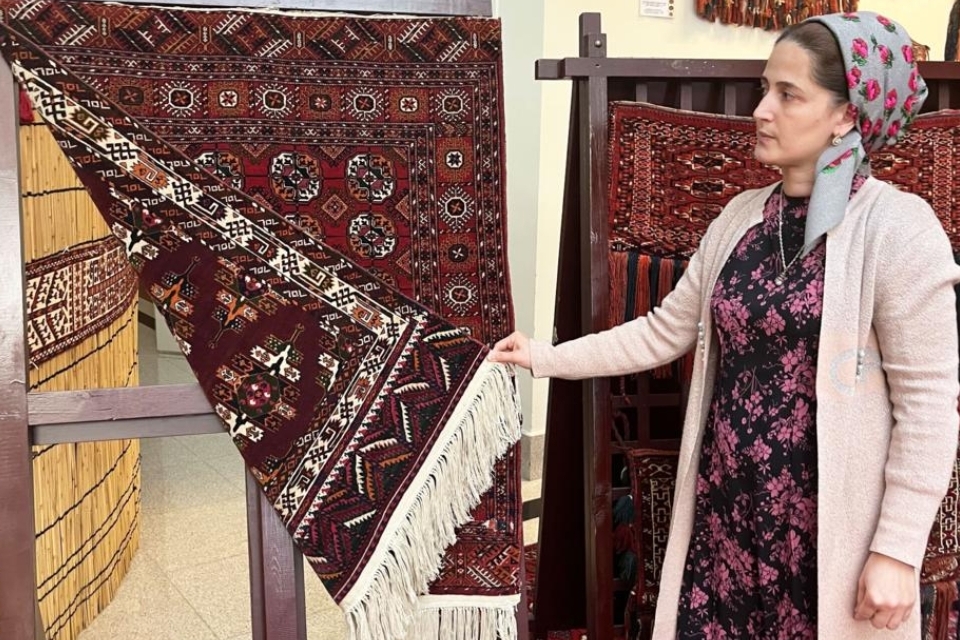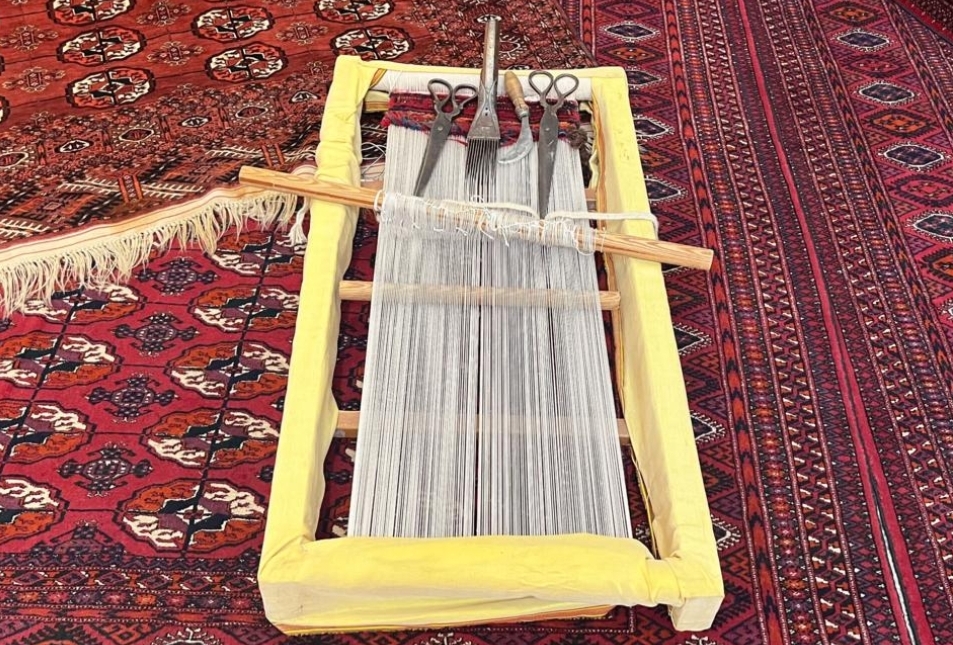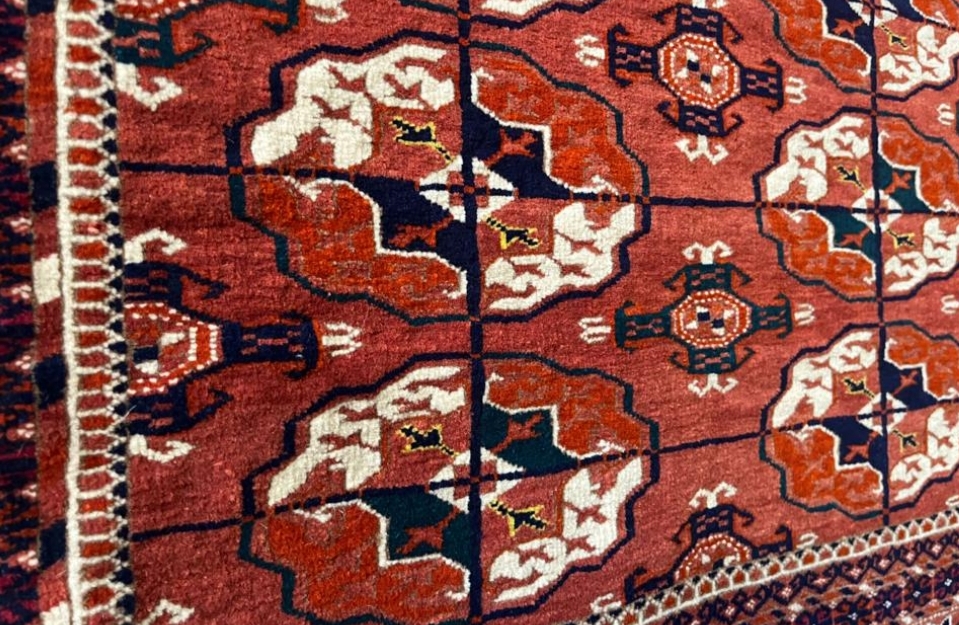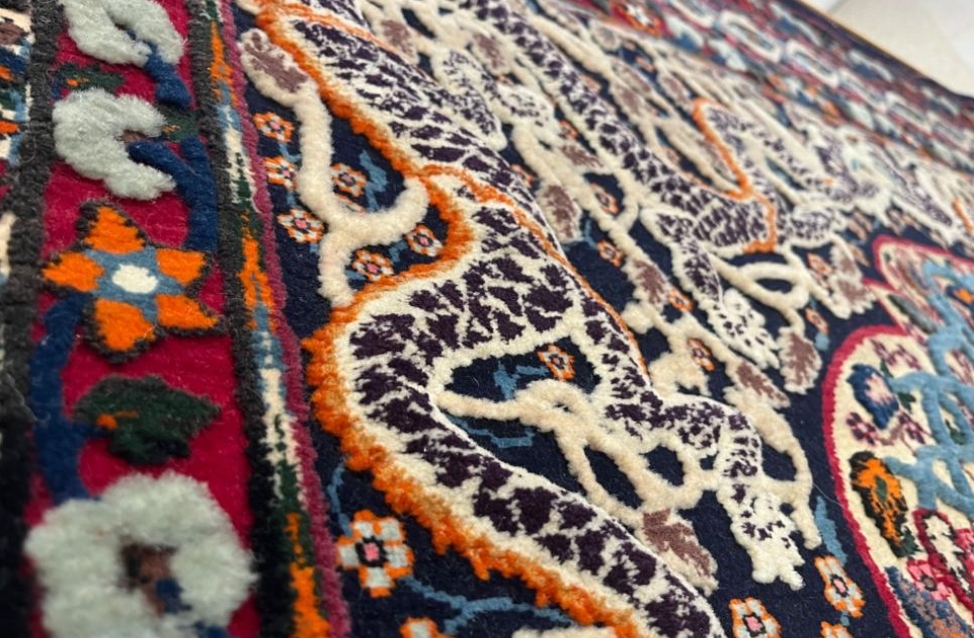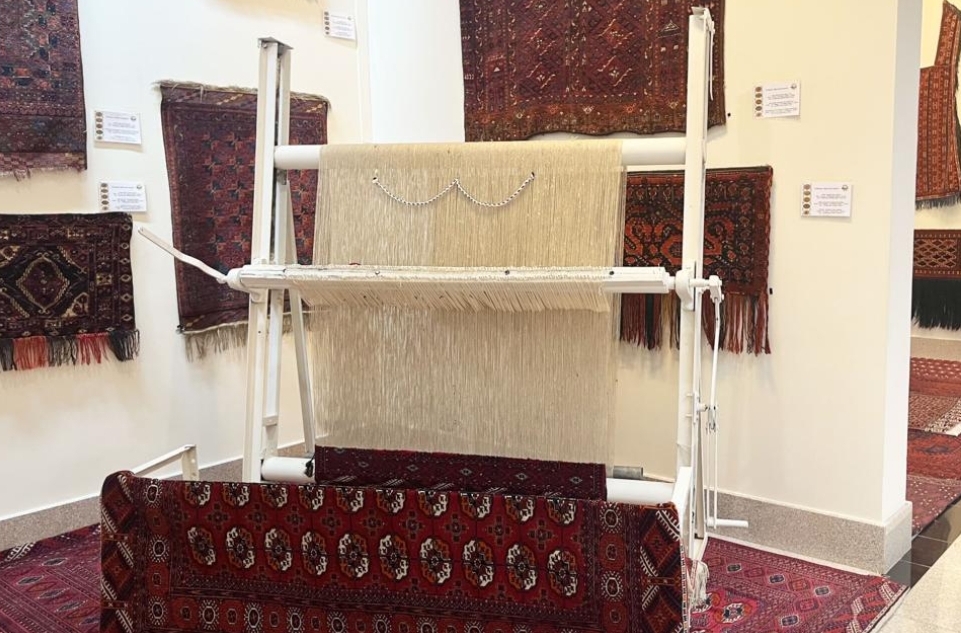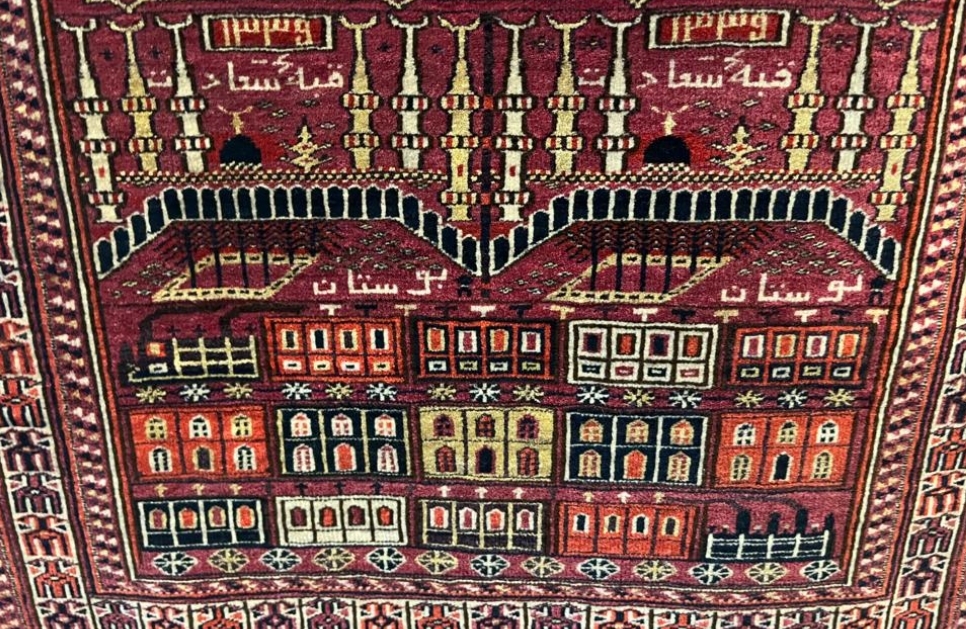Oleg Pavlenko
The National Museum of the Turkmen Carpet in Ashgabat told about the most unusual exhibits, their history and even secrets
Double-sided carpet
© Oleg Pavlenko/ TASS
The art of carpet weaving is a matter of special pride for Turkmenistan. In the country, this craft has the status of a national treasure. For centuries, the carpet has been considered something more than just an element of the interior. And the most interesting ones are collected in the Ashgabat Museum, which celebrated its thirtieth anniversary on 20 March. Many of the exhibits there have an unusual fate.
Travel to Moscow
For example, the carpet “Soul of Turkmens” was prepared for an exhibition of Turkmen art in Moscow in the 1940s. “The organizers wanted to do something unusual, to show the highest manifestation of Turkmen culture by weaving a giant canvas,” says a representative of the museum.
© Oleg Pavlenko/ TASS
Work then began literally a week before the start of the Great Patriotic War. The exhibition, of course, never took place, but the carpet was finished — on 13 February 1942. At that time, it was considered the largest carpet in the world: its dimensions were 10.5 by 18 m, and the total area was 193 sq. m. According to a representative of the museum, 39 carpet-makers worked on it. After Turkmenistan gained independence, all of them received state awards.
“The pattern of this carpet is traditional Akhal-Teke. The name was chosen for a reason, it is based on the proverb: “Water is the life of Turkmens, a horse is the wings of Turkmens, and a carpet is the soul of Turkmens,” told a representative of the museum.
Despite the fact that that exhibition of Turkmen art never took place, this carpet was showcased in the capital of the USSR at that time. “It was sent to Moscow only in 1985, where it was used as a curtain at the Bolshoi Theater. However, the carpet turned out to be too heavy, as much as 650 kg, so it was removed and returned back,” the museum explains. “As a result, today it is one of our main exhibits.”
“In 1942, it was probably the largest carpet in the world. In any case, we do not know about other similar ones from that period. But, what is absolutely certain, there is a carpet in the museum, which in 2003 was included in the Guinness Book of Records as the largest in the world today,” the interlocutor notes. It was woven in 2001 by 40 craftswomen. Width is 21.5 m, length is 14 m, area is 301 sq. m, and it weighs 1.2 t.
Spread out your carpet and I’ll read what’s on your mind
That’s what they say in Turkmenistan. After all, each of the five provinces of the country has its own gels (from Turkmen “repeating patterns”), which the Turkmens read like an open book. In addition, the five main carpet ornaments of the country’s regions are placed on the national flag.
The pattern of the Akhal province
© Oleg Pavlenko/ TASS
So, the Akhal province — the capital of the country Ashgabat is geographically included in it, but administratively the city has the status of a separate province, — has a pattern that geometrically symbolizes a calendar. The patterns of the Mary province depict the symbols of yurts, hearth and friendly family. The patterns of the Balkan — the west of the country, closer to the Caspian Sea — are characterized by a maritime theme. Carpets of the Dashoguz province — the north of the country, bordering Uzbekistan — can be recognized by the pattern, which is based on details in the form of a headscarf, symbolizing the harsh winters of the northern region of the country. On the carpets of the Lebap province there are patterns representing the flora and fauna, reflecting the richness of nature and fertility, because the Amu Darya River flows through the territory of this region.
The dead in one day
“And this carpet is a real masterpiece. It is woven using relief technology. A tragic story is connected with it,” the representative of the museum continues the story.
Four dragons are depicted on the carpet. The master copied them from one of the portals of the Seyit Jemal ad-Din mosque, the so—called House of Beauty, a monument of medieval architecture of Central Asia, located just 12 km from Ashgabat. Probably, these mythical animals were considered guardian spirits. According to legend, people helped one dragon who lived in these places, and in gratitude he shared with them the treasures that were used in the construction of the mosque.
Images of living beings, and even more dragons, are generally atypical for religious Islamic objects. According to some sources, it was the only known image of these mythical lizards on the walls of the mosque in the world. In the fall of 1948, the House of Beauty turned into ruins after the strongest earthquake that hit Ashgabat. Then tens of thousands of people died in the republic. The dragons did not survive either — the mosque was destroyed. By a tragic coincidence, the master who worked on the carpet was among the victims of the Ashgabat earthquake — she never finished her creation.
© Oleg Pavlenko/ TASS
But still, four years later, the carpet was finished. “There is no second such carpet. We are studying now, trying to do something similar. We are doing it, but not quite like this yet. There are no masters and craftswomen who could repeat this. This is a unique technique,” says a representative of the museum.
A brave craftswoman and an evil khan
There are also so-called double-sided carpets in the museum – they do not have a wrong side, since the patterns are located on both sides. There are only a few of them.
It is believed that the first such carpet was woven in ancient times by a Turkmen woman whose husband and son were captured by the evil khan. “She was not afraid and came straight to the khan with a request to release them and he answered: “I will release them if you can surprise me with something that I have not seen in my life yet.” Then she asked for some wool and, returning home, started to weave,” the museum says.
There was only enough wool for one copy. “You ask to release two, but you brought only one carpet,” khan told her. “I could not share the love for my son and my husband,” the brave woman answered him and showed him a carpet with a double-sided pattern. Khan was amazed by both the response and the amazing creation and freed not only her family, but also all the prisoners.
Invariable over the centuries
The process of creating carpets has hardly changed since ancient times. For weaving, only wool of a special breed of sheep is used — Saradzhinskaya, which is characterized by specific softness and elasticity. Before starting work, the wool is thoroughly washed. This enables finished carpets to never again be washed; dry cleaning is used on them.
© Oleg Pavlenko/ TASS
The tools for making carpets have remained unchanged for centuries: darak (a tool used to nail and align knots of woolen threads), keser (a knife for cutting threads) and synny (long scissors for leveling carpet pile). Creating one carpet is a very labor-intensive process: on average, 200-300 thousand knots per square meter.
Pilgrimage to Mecca
According to the representative of the museum, most of the collection, and it consists of more than two thousand items, was collected by population of the country. One of the exhibits is a prayer mat. “This is the only prayer mat in the museum that depicts holy places for Muslims — Mecca and Medina,” the expert notes.
The rug was created in 1921 in Bayramali, in the east of the country. There are marks on it about the date and place of creation, which, according to the representative of the museum, is very rare. The carpet depicts the history of the pilgrimage to Mecca and Medina, which was made at that time by the father of the carpet-makers.
© Oleg Pavlenko/ TASS
“The girls wove it according to their father’s story, that is, they themselves were not in Mecca. But the guests from the United Arab Emirates who visited us noted that everything was depicted very correctly and clearly. Even the Arabic letter was woven without mistakes — the names of sacred places, the names of Allah and praises to Him are written there,” the representative of the museum adds.
The collection is constantly being updated. This is also due to the fact that in 2019 the Turkmen art of carpet weaving was included in the UNESCO Representative List of the Intangible Cultural Heritage of Humanity. In Turkmenistan, there is a State association “Turkmenhaly” (“Turkmen Carpet”), which includes ten enterprises from all regions of the country, which employ over ten thousand carpet-makers. ///TASS, 20 March 2023
Originally published at: https://tass.ru/kultura/17298719
